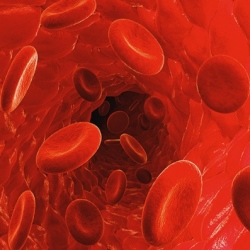
Ben-Gurion University of the Negev (BGU) in Israel and University of Colorado researchers have developed a dynamic anti-inflammatory “smart” drug that can target specific sites in the body and could enhance the body’s natural ability to fight infection while reducing side effects.
This protein molecule, reported in the current issue of Journal of Immunology, has an exceptional property: when injected, it’s non-active. But upon reaching a local site with excessive inflammation, it becomes activated. Most other anti-inflammatory agents have broad effects in the body.
“This development is important because inhibition of inflammation in a non-specific manner reduces the natural ability to fight infections and is a common side effect of anti-inflammatory biologic therapeutics,” says Dr. Peleg Rider of BGU’s Department of Clinical Biochemistry and Pharmacology.
Using such a non-specific agent means any patient who suffers from local inflammation could be exposed to opportunistic infections at distant sites, such as lungs, which could risk tuberculosis, for example. This is especially a concern for immunosuppressed patients, as well as older patients and patients undergoing chemotherapy as part of an anti-cancer treatment course.
“The beauty of this invention lies in the use of a known natural biological code,” Rider explains. “We mimicked a natural process that occurs during inflammation.”
Here’s how it works. The protein molecule (known as Chimeric IL-1Ra) is actually a chimera, combining two protein domains, both originating from the potent inflammatory IL-1 (interleukin family) protein (a group of 11 cytokines). (IL-1 normally plays a central role in regulating both immune and inflammatory responses to infections.)
The first part of this chimeric protein (IL-1beta) keeps a potent IL-1 natural infllammatory inhibitor (known as IL-1Ra) inactive. But when the IL-1Ra protein molecule encounters inflammatory enzymes, it springs into action, overriding IL-1beta, and is cleaved (split open), releasing powerful active molecules to reduce inflammation.
Rider, along with BGU’s Dr. Eli Lewis and Prof. Charles Dinarello of the University of Colorado, demonstrated their findings in a mouse model of local inflammation. They showed that leukocytes, which infiltrate inflammatory sites, indeed activate the chimeric protein, which in turn reduces local inflammation. The extent of activation of the protein correlated with the amount of inflammatory stimuli.
“Thus, a point that is highly relevant to clinical practice arises. Upon resolution of inflammation, the activation of the protein is also reduced and side effects are avoided,” Rider explains.
